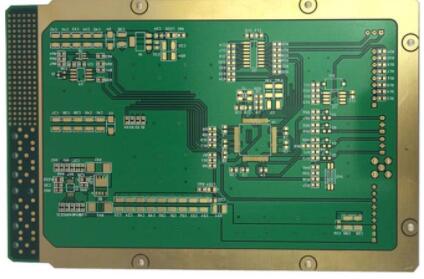(1) Different signal working frequencies have different requirements for PCB high-frequency boards.
(2) FR4 can be selected for PCB boards that work below 1GHz, with low cost and mature multi-layer laminate technology. If the signal input and output impedance is low (50 ohms), the characteristic impedance of the transmission line and the coupling between the lines need to be strictly considered when wiring. 5.4) and unstable.

(3) For optical fiber communication products above 622Mb/s and small-signal microwave transceivers above 1G and below 3GHz, modified epoxy resin materials such as S1139 can be used, because its dielectric constant is relatively stable and costly at 10GHz The process of low and multi-layer laminates is the same as FR4. Such as 622Mb/s data multiplexing and branching, clock extraction, small signal amplification, optical transceivers, etc., it is recommended to use this type of board to facilitate the production of multi-layer boards and the cost of the board is slightly higher than FR4 (about 4 cents/cm2 higher), The disadvantage is that the thickness of the substrate is not as complete as FR4. Or, use RO4000 series such as RO4350 and RO4003C, but currently RO4350, RO4003c single-sided high-frequency board, double-sided high-frequency board, multi-layer high-frequency board, high-frequency mixed board, high-frequency pure pressure board are generally used in China. For example, RO4350 and RO4003C Rogers high frequency board manufacturers produce four kinds of board thicknesses such as 10mil/20mil/30mil/60mil, which are commonly used. Of course, there are other series of Rogers or Teconi boards, mainly according to your design requirements. To choose different types of high-frequency boards, the dielectric constant ranges from 2.2 to 10.6.
(4) For large-signal microwave circuits below 3GHz, such as power amplifiers and low-noise amplifiers, it is recommended to use plates similar to RO4350. The dielectric constant of RO4350 is quite stable and the dielectric constant is 3.48. The dielectric constant of RO4003C is 3.38. These two conventional High-frequency boards have relatively low loss factors, good heat resistance, and processing technology equivalent to FR4. Its sheet cost is slightly higher than FR4 (about 6 minutes/cm2 high).
(5) Microwave circuits above 10GHz, such as power amplifiers, low-noise amplifiers, up-down converters, etc., have higher requirements for plates, so you can choose a high-frequency plate that suits you, such as imported plates: Rogers, taconic, domestic Sheets include: F4BME, Zhongying, Fu Shide, etc.
(6) Multilayer PCB for wireless mobile phones requires dielectric constant stability, low loss factor, low cost, and high dielectric shielding requirements. It is recommended to choose a plate with similar performance to PTFE (multi-purpose in the United States/Europe), or FR4 and High-frequency board combination and bonding form a low-cost, high-performance laminate.